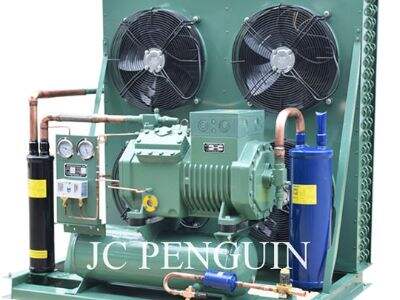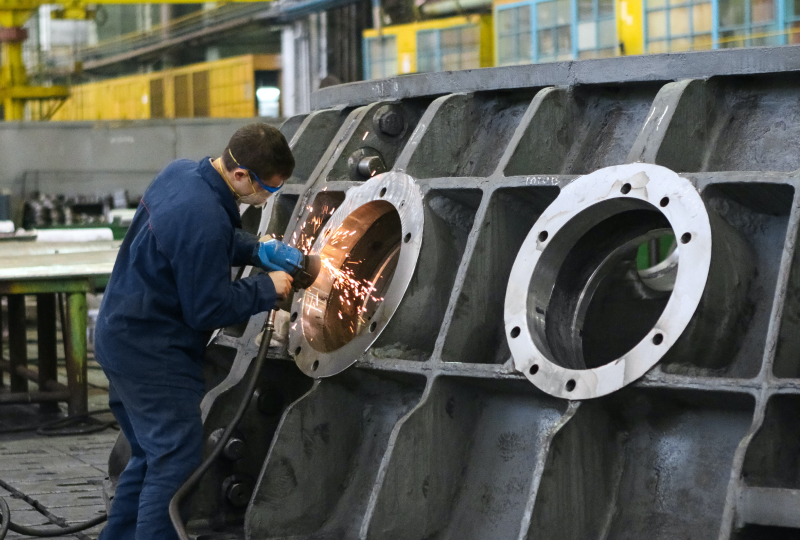En un sistema de refrigeración, los condensadores son cruciales para extraer el calor y mantenerse fríos. Una cosa importante que contribuye al buen funcionamiento de los condensadores es la cantidad de aletas. En este artículo descubriremos cómo la densidad de las aletas afecta el rendimiento de estas unidades de refrigeración y cómo se disipa el calor.
¿Qué son las Aletas y Su Función?
Las aletas son piezas delgadas de metal conectadas a los tubos de un condensador. Estas aletas aumentan el área superficial del condensador y ayudan en la transferencia de calor. La densidad de las aletas se refiere a lo cerca que están espaciadas en los tubos del condensador.
¿Cómo afecta la Densidad de las Aletas a la Disipación del Calor?
La cantidad de aletas en un condensador determina qué tan bien puede manejar la eliminación del calor. Cuando las aletas están colocadas muy juntas, hay más superficie disponible para que el calor se transfiera del refrigerante al aire. Esto mejora la refrigeración.
Cuando las aletas están demasiado separadas, existe menos superficie para la transferencia de calor. Esto puede hacer que el condensador no sea tan eficaz al eliminar el calor. Debe encontrar un equilibrio en la densidad de las aletas para poder disipar el calor.
Rendimiento del Condensador y Separación de Aletas
La forma en que un condensador transfiere el calor está directamente relacionada con la cantidad de aletas. Cuando la densidad de las aletas es la correcta, permite que el condensador transfiera eficazmente el calor del refrigerante al aire, logrando un buen funcionamiento del aire acondicionado.
Si el espaciado entre aletas es demasiado amplio, el condensador podría no extraer suficiente calor. Esto puede hacer que consuma más electricidad y potencialmente falle. Si la cantidad de aletas es excesiva, se dificultará la ventilación y se reducirá la eficiencia del enfriamiento del condensador.
Mejorando el Diseño del Condensador con la Densidad de Aletas
Para ayudar a que los condensadores funcionen de manera más efectiva, los ingenieros deben prestar mayor atención a la densidad de las aletas para la disipación del calor. Al seleccionar la densidad adecuada de aletas, pueden garantizar que el radiador funcione bien y que el refrigerador enfríe de forma eficaz.
Los ingenieros e investigadores pueden probar la densidad óptima de aletas para diversos diseños de condensadores. Esto les permite crear unidades que enfríen de manera más eficiente, con menor consumo de energía y menores costos operativos.
Importancia de la densidad de aletas en el enfriamiento
Por último, pistón en compresor la densidad de aletas es generalmente muy crucial para la optimización de la transferencia de calor en las unidades de condensación. Si no comprenden cómo la densidad de las aletas influye en la disipación del calor, los ingenieros no sabrán qué condensadores realizarán el mejor trabajo al eliminar el calor y mantener las cosas frías.
Basándose en la densidad de aletas, como en todas las cosas, si uno fabrica correctamente la unidad del condensador, puede producir una unidad de condensador que ahorre energía, sea más económica de operar y confiable. Es importante tener en cuenta la densidad de las aletas de un condensador como factor para un gran desempeño de enfriamiento y para prolongar la vida de un sistema de refrigeración.
En resumen, la densidad de las aletas es una consideración crítica en la construcción de condensadores y en la eliminación del calor de un sistema. Al aumentar la densidad de las aletas, los ingenieros pueden desarrollar unidades de condensador que enfríen más eficazmente y sean soluciones de refrigeración más respetuosas con el medio ambiente.

 AR
AR
 FR
FR
 DE
DE
 JA
JA
 KO
KO
 PL
PL
 PT
PT
 RU
RU
 ES
ES
 TL
TL
 ID
ID
 VI
VI
 TH
TH
 TR
TR
 MS
MS
 BN
BN
 LO
LO
 MN
MN
 MY
MY
 KK
KK
 TG
TG
 UZ
UZ
 KY
KY




